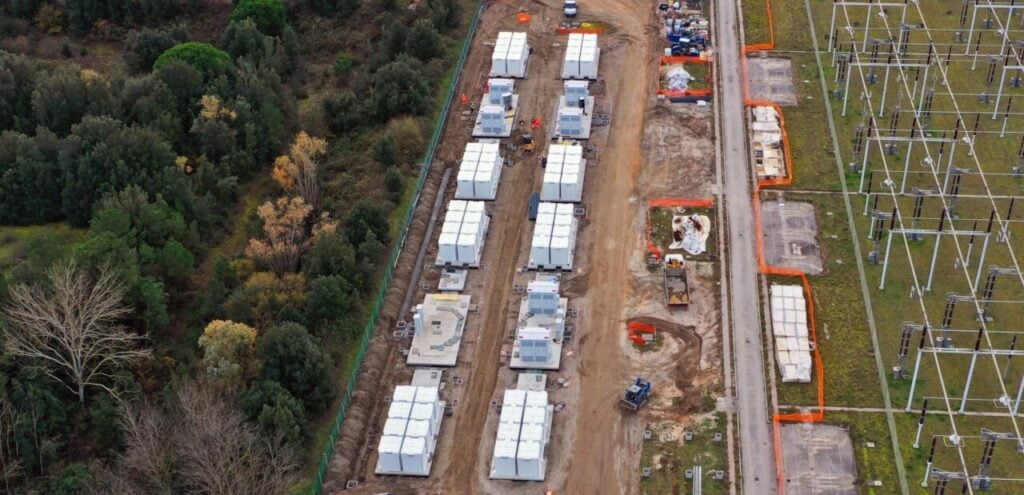
The low level of the MACSE tariffs in Italy took everyone by surprise and will require careful asset management, but their relative value and those of the capacity market (CM) should increase over time.
That’s the view of Stefano Cavriani, founder and director of Italy-based energy management and VPP group Ego Energy, which was acquired by oil and gas major Shell in 2023.
Cavriani will be one of the many industry expert speakers at the upcoming Battery Asset Management Summit Europe 2025 in Rome on 2-3 December, hosted by our publisher Solar Media.
He gave Energy-Storage.news a Q&A in advance of the event, touching on various aspects of BESS asset management in Italy and the MACSE auction, which concluded at the end of September, awarding 15-year revenue contracts to 10GWh of grid-scale BESS projects, over half of which were from state-backed power firm Enel.
Try Premium for just $1
- Full premium access for the first month at only $1
- Converts to an annual rate after 30 days unless cancelled
- Cancel anytime during the trial period
Premium Benefits
- Expert industry analysis and interviews
- Digital access to PV Tech Power journal
- Exclusive event discounts
Or get the full Premium subscription right away
Or continue reading this article for free
Energy-Storage.news: How has BESS asset management best practice in Europe evolved in the past three years?
Stefano Cavriani: The development of BESS projects is a strong trend all-around Europe: more and more the renewable non-dispatchable generation capacity is increasing, and the necessity of managing the unbalancing grows in parallel.
The BESS can be managed through medium-long term contracts, which give contracted-revenues structure to make the projects bankable – or can be managed with a more merchant approach, which is that the BESS have no explicitly guaranteed revenues but are managed on a spot basis.
The contracted revenues structure can be given with a tolling agreement (the trader in this case is the toller) where the toller pays a fixed fee for some years to the BESS owner and gets the BESS under its commercial management; of course, the technical constraints have to be predefined and agreed). This tolling agreement can last up to 5-7 years.
The merchant approach can be managed with a profit-sharing formula, where trader and BESS owner obtain a predefined quota of the total achieved result i.e., full convergence of reciprocal interest.
In any case the route-to-market service, physical dispatching of the BESS to participate into Day-Ahead Market and Ancillary Services Market, has always to be provided, apart from in the case of ‘financial’ tolling, a simpler structure which consists of a DA swap, to be integrated anyway by the dispatching management.
In any case, the role of the trader as market player is decisive, and for this it is important to select a strong, affordable and technologically skilled one.
In Italy the evolution of the BESS market is very strong, following MACSE which gave very long-term view on the revenues and of Capacity Market, which are potentially 15 years too – both managed by Italian transmission system operator (TSO) Terna, and both more and more expected to be very much competitive, with related revenues decreasing.
What is your current approach to maximising returns from your BESS, and what key performance indicators drive your operational decisions?
We are able to operate the BESS from any possible point of view: short-term optimisation, long-term price fixing, to time-shifting, ancillary services, etc.
Our operational decisions depend on nominal power, capacity, location, expected COD and technical parameters of each BESS we evaluate.
Thanks to the strong commercial and technical know-how we are a one-stop-shop for any BESS developer.
How do you balance profitable market participation with preserving battery cell health, and what role do optimisation technologies play in this decision-making process?
The full respect of any technical constraints is for us mandatory and continuously checked.
To operate in the market and optimise the result we have developed and continuously develop technological capabilities in terms of plant modelling, monitoring and controlling (data-science, IoT, data-energy platform, etc).
How do you view the current state of risk-sharing between parties in the European BESS industry, and how will this evolve over time?
In relation to risk sharing between BESS owner and BESS trader/toller, as I said previously, the tolling agreement passes to the trader all the commercial risks, the profit-sharing creates a full risk/opportunity sharing.
In terms of risk sharing between BESS project developer and BESS investor, normally the BESS project is paid with earn-out payments related to the various achieved milestones up to final contracted revenues definition.
What are your views on the MACSE auction and how winning project owners will need to approach asset management?
The Italian MACSE auction gave surprising results with very low finally awarded tariffs.
ENEL won a large part of the available volumes (65% of the total) and this demonstrates their industrial capability and competitive advantage, such as the availability of brownfield projects, large economies of scale in terms of BESS purchasing and so on.
The low revenues, albeit guaranteed for 15 years, will require very careful asset management by the auction winners, but evidently, they are strong players able to do this.
How does the BESS asset management question differ for standalone versus co-located projects?
In Italy, due to specific rules defined by Italian Energy Authority (ARERA), there is basically no difference in terms of energy cost to be paid to charge the BESS if the BESS is directly connected to an onsite co-located generation plant, or not.
The trader is surely interested in managing a co-located project, thanks to the flexibility given to the PPA price by the BESS availability, but this combination could also be virtual and not necessarily physical
